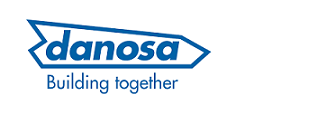

Geosynthetics
Geosynthetics are synthetic products used to stabilize terrain. They are generally polymeric products used to solve civil engineering problems. This includes eight main product categories: geotextiles, geogrids, geonets, geomembranes, geosynthetic clay liners, geofoam, geocells and geocomposites. The polymeric nature of the products makes them suitable for use in the ground where high levels of durability are required. They can also be used in exposed applications. Geosynthetics are available in a wide range of forms and materials. These products have a wide range of applications and are currently used in many civil, geotechnical, transportation, geoenvironmental, hydraulic, and private development applications including roads, airfields, railroads, embankments, retaining structures, reservoirs, canals, dams, erosion control, sediment control, landfill liners, landfill covers, mining, aquaculture and agriculture.
Geogrid
Geogrid is an integrally formed structure, which especially designed for soil stabilization and reinforcement applications. Geogrid is manufactured from Polyester, Polypropylene, Fiberglass and Polyethylene from the process of extruding, longitudinal stretching and transverse stretching.
Polyester biaxial/uniaxial geogrid
Polyester biaxial/uniaxial geogrid applies chemical fiber with extreme strong elasticity
modulus, make it into grid loom stare through oriented warp knitting.
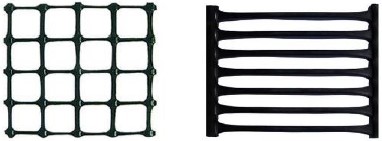
Features
Application
For our best technical and commercial proposal, please send your enquiries to our email address info@gic.com.sa
High strength Polyester Mining grid
High strength Polyester Mining grid is made of reinforced polyester yarns, coated with a
layer of conducting electrostatic, with the high fire retardant acid and alkali resistance,
it can be widely used in the intermediate ceiling and side protection net in mining
projects.
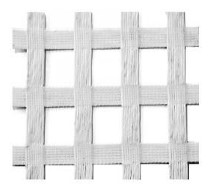
Features
Application
For our best technical and commercial proposal, please send your enquiries to our email address info@gic.com.sa
Polypropylene biaxial/uniaxial geogrid
Polypropylene biaxial/uniaxial geogrid is manufactured from Polypropylene through the
process of extruding, punching, heating and stretching.

Features
Application
For our best technical and commercial proposal, please send your enquiries to our email address info@gic.com.sa
Polypropylene mining grids
PP mining grids are especially for underground mine and tunnel applications. The grids have
an integrally formed structure with high tensile strength on MD and TD directions. The
Mining grids are manufactured from special formula with flame-retardant polymer.
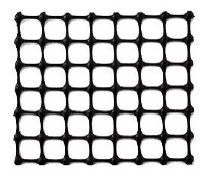
Features
Low weight: it can reduce labor intensity, improve work efficiency, and it is easy to install and use.
Safety: antistatic, flame retardant, can effectively prevent the electrostatic sparks.
Application
For our best technical and commercial proposal, please send your enquiries to our email address info@gic.com.sa
HDPE uniaxial geogrid
HDPE uniaxial geogrid is manufactured from High Density Polyethylene through the process of
extruding, punching, heating and stretching.

Features
Application
For our best technical and commercial proposal, please send your enquiries to our email address info@gic.com.sa
Fiberglass geogrid
Fiberglass geogrid is a kind of new favorable earthwork base material to strengthen the road
surface and roadbed. This product is knitted by fiberglass filaments and coated with an
inorganic sizing agent.
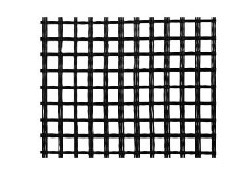
Features
Application
For our best technical and commercial proposal, please send your enquiries to our email address info@gic.com.sa
Geotextile
Permeable fabrics, which, when used in association with soil, have the ability to separate, filter, reinforce, protect, drain or stabilize. Used in infrastructure and civil engineering applications such as foundations, dams, reservoirs, canals, landfills, roads and railways.
Non-woven geotextile
Nonwoven geotextiles are synthetic textile materials composed of the polypropylene,
polyester or high density polyethylene fibers or filaments randomly oriented, needled
together by mechanical and/or thermal processes.
Polyester non-woven geotextile
Geotextile made of non-woven polyester fibers, bonded by needle punching. Presents an
excellent mechanic performance (protection, separation) and hydraulic performance
(filtration). Used mainly in the building industry for protection of waterproofing sheets
before fixing the heavy protection and as auxiliary sheet for separation and filtration.
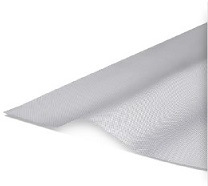
Features
Application
As a filter layer, preventing the passage of small particles and clogging of the system.
As a protective layer for sheets from mechanical damage and piercing.
As a separating layer, avoiding contact between layers of different nature, preventing their mixing and guaranteeing the maintenance of their initial performance.
For our best technical and commercial proposal, please send your enquiries to our email address info@gic.com.sa
Polypropylene non-woven geotextile
A high performance range of superior needle punched Polypropylene Non-woven geotextile that
have been developed to offer outstanding performance at minimum weight. Our product range
offer a superior puncture resistance when compared other needle punched non-woven products
of comparable weight.

Features
Application
For our best technical and commercial proposal, please send your enquiries to our email address info@gic.com.sa
Woven geotextile
Woven geotextiles are textile materials consisting of regular planar structures formed by
weaving from the interweaving of a number of threads (warp and weft, perpendicular to each
other) which allow to obtain a fabric with excellent mechanical properties and regular
openings, even the smallest ones. In relation to the section of the fiber and the type of
weaving geotextiles are divided into two main families: monofilament fabrics (polyester) and
woven geotextiles straps (polypropylene).
Polyester woven geotextile
Polyester woven geotextiles fabricated with high tenacity and high molecular weight
polyester (PET) yarns. PET geotextiles have high tensile strength at very low strain for
soil reinforcement applications including soft soil stabilization, base reinforcement,
embankments on soft soils and working platforms, etc.

Features
Outstanding Long-Term Design Strength (LTDS) proven by numerous tests from accredited laboratories.
Highly cost-effective for soil reinforcement applications.
Application
For our best technical and commercial proposal, please send your enquiries to our email address info@gic.com.sa
Polypropylene woven geotextile
Polypropylene woven geotextiles is a high tenacity woven geotextile made by weaving of black
polypropylene tapes UV treated. It can be used for reinforcement, separation and filtration
functions as it has excellent mechanical and hydraulic properties. It is extremely effective
in soil stabilization and reinforcement for roads, railways, and airports applications.
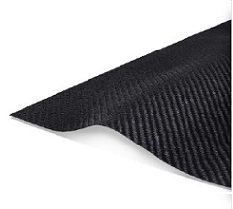
Features
High quality and durability to ensure structure safety.High mechanical and filtration performance to enhance usage efficiency.
Easy handling and installation to reduce construction time and costs.
Application
For our best technical and commercial proposal, please send your enquiries to our email address info@gic.com.sa
Geotextile bags
Geotextile bags (also known as geobags, sand bags or geotextile sand containers) for forming
temporary or permanent structures in hydraulic and geotechnical engineering, erosion control
and facility protection. The sizes and shapes can be customized to satisfy the desired
purpose.
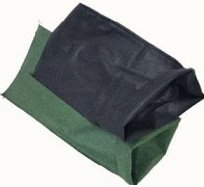
Features
High versatility in diverse application environments
High mechanical and filtration performance to enhance usage efficiency
Environmentally friendly with less carbon emission
Application
For our best technical and commercial proposal, please send your enquiries to our email address info@gic.com.sa
3D Geomat
3D-Mat available in 10 and 20 mm thicknesses, is a three dimensional structured erosion control
mat manufactured from Polypropylene monofilaments. It is easy to install on slopes up to 60° and
delivers a lifetime of low-maintenance erosion control.

Features
Application
For our best technical and commercial proposal, please send your enquiries to our email address info@gic.com.sa
Geocell
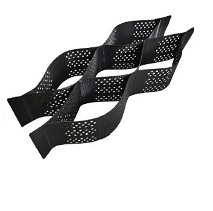 Geocells are widely used in the applications of erosion control, slope stabilization and road construction as a confinement system, it has a unique honeycomb structure made from a highly permeable and tough geotextile that is easy to install and secure. The structure forms mini-cascades which reduce surface water run-off by decreasing flow velocity, and prevents the formation of erosion channels. Geocell panel is usually filled with topsoil which allows seeding and growth of vegetation on surfaces that could otherwise not sustain grass or plants (eg. steep or rocky slopes). It is also suitable to stabilize gravel berms or to serve as formwork for concrete river bed construction.
Geocells are widely used in the applications of erosion control, slope stabilization and road construction as a confinement system, it has a unique honeycomb structure made from a highly permeable and tough geotextile that is easy to install and secure. The structure forms mini-cascades which reduce surface water run-off by decreasing flow velocity, and prevents the formation of erosion channels. Geocell panel is usually filled with topsoil which allows seeding and growth of vegetation on surfaces that could otherwise not sustain grass or plants (eg. steep or rocky slopes). It is also suitable to stabilize gravel berms or to serve as formwork for concrete river bed construction.
Features
Entire product is permeable.
During installation the product easily adapts to demanding conditions and contours.
Ensures the stability of the top layer and prevents surface slips.
Minimizes erosion of soil by wind and water immediately after installation (even before seeding and vegetation growth on the slope; plant growth not essential, but enhances the stabilization of the top layer).
Environmentally friendly with less carbon emission.
Application
For our best technical and commercial proposal, please send your enquiries to our email address info@gic.com.sa





